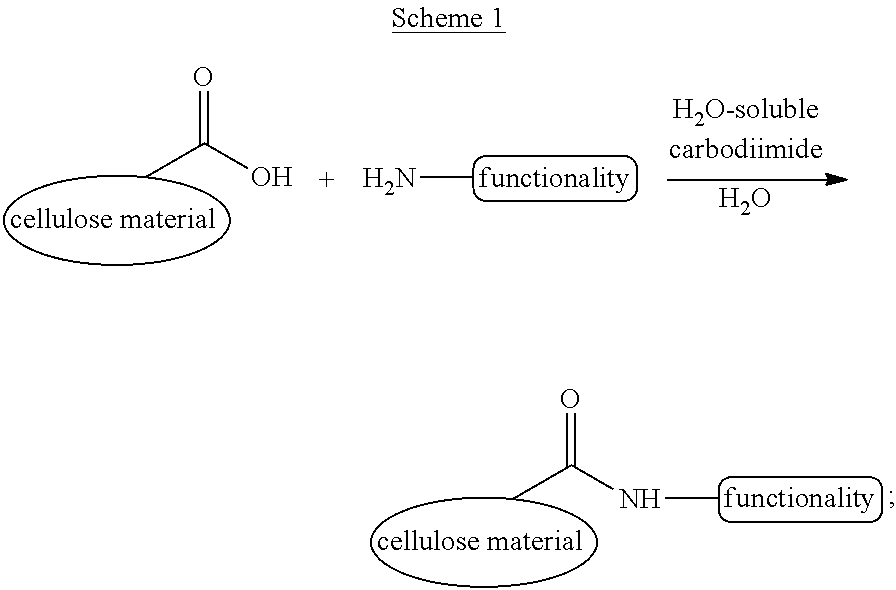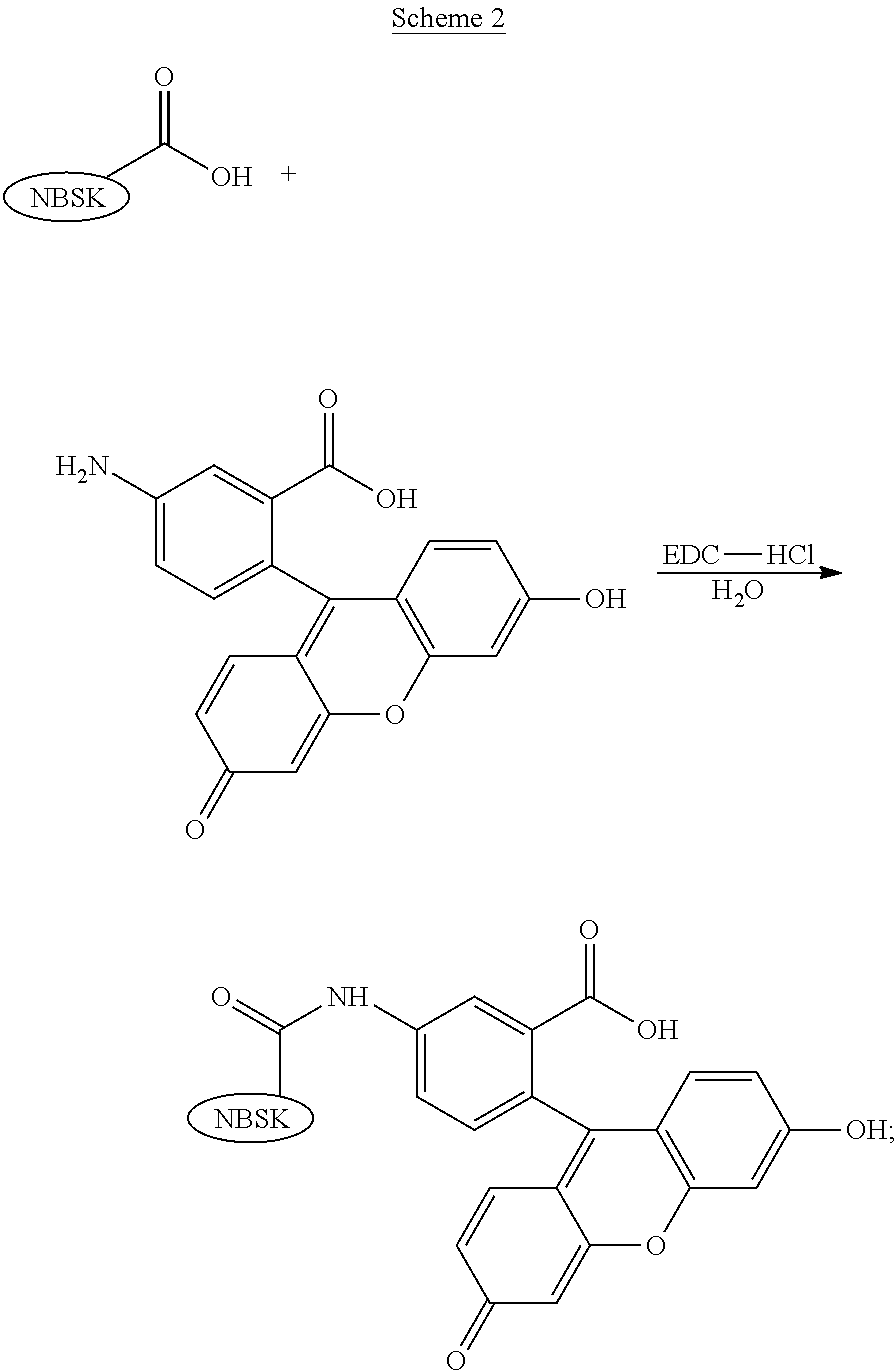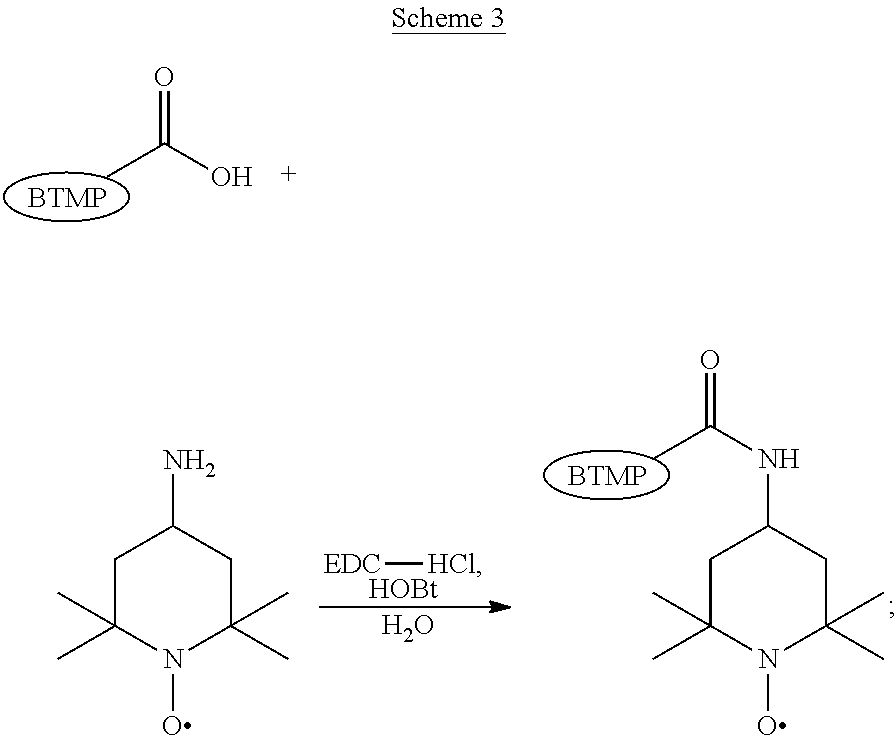Cellulose materials with novel properties
- Summary
- Abstract
- Description
- Claims
- Application Information
AI Technical Summary
Benefits of technology
Problems solved by technology
Method used
Image
Examples
example 1
[0078]A commercial northern bleached softwood kraft (NBSK) pulp (5.0 g od) was reacted with 0.48% (od pulp) of 5-aminofluorescein (“A-fluo”) and 0.50% (od pulp) of EDC.HCl according to the General Procedure A disclosed above except that 0.10% (od pulp) of HOBt was also added. A separate (control) reaction was also performed on 5.0 g (od) of the NBSK pulp according to General Procedure A disclosed above except that 0.0% of EDC.HCl and 0.0% of HOBt were used for the reaction. The amount of “A-fluo” attached to the NBSK was determined to be 0.063% (od pulp), according to General Procedure B disclosed above, for the reaction of the pulp with 0.50% (od pulp) of “A-fluo”, 0.50% (od pulp) of EDC.HCl and 0.10% (od pulp) of HOBt. No “A-fluo” was found to attach to the NBSK pulp, according to General Procedure B disclosed above, for the control reaction of the pulp with 0.50% (od pulp) of “A-fluo”, 0.0% of EDC.HCl and 0.0% of HOBt.
[0079]The NBSK pulp attached with 0.063% (od pulp) of “A-fluo”...
example 2
[0081]A commercial NBSK pulp (5.0 g od) was reacted with 0.49% (od pulp) of “A-fluo” and 0.50% (od pulp) of EDC.HCl according to the General Procedure A disclosed above except that the pH of the pulp slurry was adjusted to 4.0±0.1 under stirring and that the pulp slurry was left at room temperature (˜20° C.) for 2 h. The amount of “A-fluo” attached to the NBSK pulp was determined to be 0.106% (od pulp), according to General Procedure B disclosed above. Scheme 2 is a schematic representation of permanent attachment of 5-aminofluorescein (“A-fluo”) to the NBSK pulp in aqueous media using EDC.HCl as a coupling agent.
example 3
[0082]A commercial NBSK pulp (5.0 g od) was reacted with 0.50% (od pulp) of “A-fluo” and 0.50% (od pulp) of EDC.HCl according to the General Procedure A disclosed above except that the pH of the pulp slurry was adjusted to 4.0±0.1 under stirring and that the pulp slurry was heated at 65° C. for 2 h. The amount of “A-fluo” attached to the NBSK pulp was determined to be 0.058% (od pulp), according to General Procedure B disclosed above.
PUM
| Property | Measurement | Unit |
|---|---|---|
| Time | aaaaa | aaaaa |
| Time | aaaaa | aaaaa |
| Time | aaaaa | aaaaa |
Abstract
Description
Claims
Application Information
 Login to View More
Login to View More - R&D
- Intellectual Property
- Life Sciences
- Materials
- Tech Scout
- Unparalleled Data Quality
- Higher Quality Content
- 60% Fewer Hallucinations
Browse by: Latest US Patents, China's latest patents, Technical Efficacy Thesaurus, Application Domain, Technology Topic, Popular Technical Reports.
© 2025 PatSnap. All rights reserved.Legal|Privacy policy|Modern Slavery Act Transparency Statement|Sitemap|About US| Contact US: help@patsnap.com



